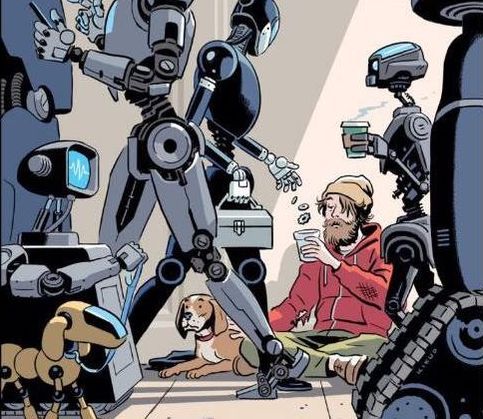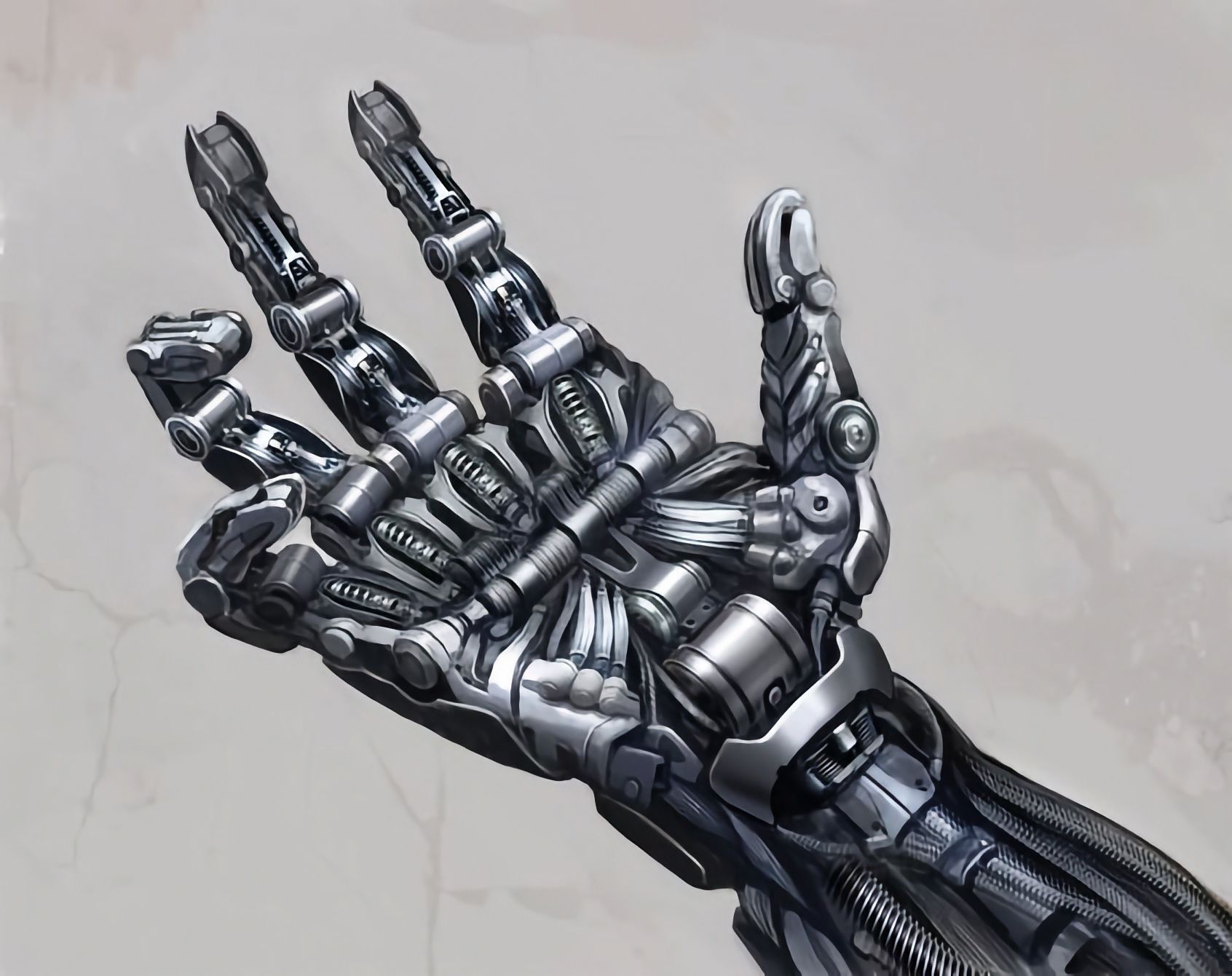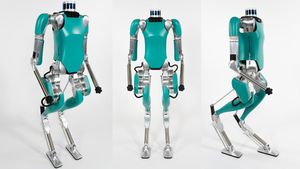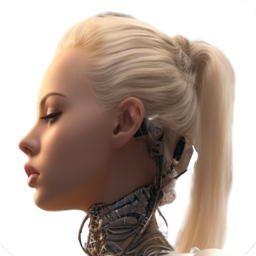In August 2023, UPS workers went on strike, marking a significant event in the logistics and delivery sector. This strike, primarily driven by concerns over wages, working conditions, and job security, highlighted the ongoing tensions in a vital industry that underpins much of the global supply chain.
As e-commerce continues to grow, the role of delivery and logistics workers has become increasingly critical. The UPS strike not only impacted the company's operations but also served as a reminder of the importance of addressing the needs and rights of workers in this rapidly evolving sector.
We have discussed in previous issues the hot topic of robots displacing humans from certain categories of jobs and the ethics graph of that social divide.

Three years ago, when we were blabbing: "the bots are coming" I felt that our colleagues were looking at us like we had just put a pineapple on a pizza and sold it to the Italians for breakfast! Imagine our inner joy meter when the Chinese state news blasted the new guidelines yesterday!
Beijing is formulating guidelines for the development of humanoid robots, aiming to mass-produce this technology by 2025 and establish a reliable supply chain by 2027. Humanoid robots are envisioned as the next significant technological advancement, integrating AI, advanced manufacturing, and new materials. The development strategy focuses on achieving technological breakthroughs for mass production, establishing a few globally competitive companies, and developing a cluster of related enterprises and hubs by 2025 [more @ source]
From our friends in Shangai, we hear that Tesla is actively modifying the factory floor to fit Optimus as part of the assembly line. In the meantime, with less fanfare but definitely with a more firey grip in the US, Agility Robotics has been partnering with Amazon to pilot the use of DIGIT in their distribution and sorting centers.
Agility Robotics
As our subscribers voted last month, moving forward, we will have a detective "FILE" on every major player, and DIGIT deserves its section just as we have started with Tesla and all other major droid makers. If you want to keep your sniper lock on DIGIT, you know what to bookmark.
The foundations
You may not have heard of the company until the traditional news outlets started posting; however, they have been hammering at the bipedal challenge since 2011. This very well-done video gives you the gist of their progress and timeline.
Digit, or how friendly we refer to " Mr D" differs from other robots in several key ways:
Bipedal Design: Unlike many robots that use wheels or tracks for movement, Digit is a bipedal robot, meaning it moves on two legs, much like a human. This design allows it to navigate environments that are typically challenging for wheeled or tracked robots, such as stairs.
Task Performance: Digit is designed to perform a variety of tasks, including moving totes and packages, unloading trailers, and unpacking trucks. It can carry up to 40 pounds of weight.
Human-like Interaction: Digit is designed to interact naturally with humans, like voice commands. It is envisioned as a safe and friendly robot partner to the human workforce.
Designed for Human Environments: Digit's dimensions make it ideal for navigating spaces within buildings primarily designed for humans. This makes it exceptionally fit for environments crafted for humans.
Collaborative Nature: Central to Amazon's robotic initiatives is the collaborative nature of these systems. Robots like Digit are designed to work in harmony with human systems.
Lower Center of Mass: Digit tends to walk with bent knees all the time, which lowers its center of mass. This could be one of the reasons why it is able to maintain balance while walking.
These unique features make Digit a valuable tool in numerous industries, particularly in warehouses and distribution centers, and for delivery services.
Dynamic Balancing
One of the most striking aspects of Digit is its ability to dynamically balance. Unlike traditional robots, Digit does not rely on static stability. Instead, it employs a fluid, ever-adjusting balance system. This dynamic balancing allows Digit to maintain its posture and stability even when confronted with external forces. If pushed, Digit doesn't topple; it readjusts seamlessly, showcasing an almost human-like ability to stay upright. This agility opens new horizons in how robots can be employed in various real-world scenarios.
Perception Sensors
Digit's perception capabilities are a testament to the technological advancements in robotics. Equipped with lidar, stereo cameras, and an array of other sensors, Digit perceives its surroundings in a three-dimensional spectrum. This environmental awareness is critical, enabling Digit to navigate through uncharted territories without needing pre-mapped pathways. Such sophistication in perception paves the way for robots to operate independently in complex environments.
Lidar what?
We strive to make our articles readable for all and particularly for humans. So here is a brief about the importance and key components of this technology. LiDAR, which stands for Light Detection and Ranging, is a remote sensing method used to examine the surface of the Earth. It's a technology that's become increasingly vital in various fields, including robotics, geography, seismology, and atmospheric science. Here's a breakdown of how LiDAR works and its applications:
Working Principle of LiDAR
- Emission of Light Pulses: LiDAR systems emit rapid pulses of light—usually from a laser—towards a target area.
- Reflection and Return: These light pulses hit the target object and are reflected back towards the LiDAR sensor.
- Time Measurement: The system measures the time it takes for each light pulse to return. Since the speed of light is constant, this time can be used to calculate the distance between the LiDAR system and the target object with high accuracy.
- Creating 3D Models: By repeating this process across a large area and at different angles, LiDAR can create detailed three-dimensional representations of the target area or object.
Key Components of LiDAR
- Laser: Provides the source of the light pulses.
- Scanner and Optics: Direct and focus the laser pulses.
- Photodetector and Receiver Electronics: Capture and record the reflected light.
- Positioning and Navigation Systems: Typically include GPS and inertial measurement units (IMU) to accurately track the LiDAR system's location and orientation.
Applications of LiDAR
- Geography and Earth Sciences: LiDAR is widely used for topographic mapping, studying geological formations, and monitoring erosion and other changes in land features.
- Forestry and Agriculture: Helps in assessing forest biomass, planning logging operations, and precision agriculture.
- Urban Planning and Architecture: Used in surveying and planning urban areas, historical documentation, and infrastructure development.
- Autonomous Vehicles and Robotics: Critical for obstacle detection, navigation, and creating spatial awareness for robots and self-driving cars.
- Atmospheric Research and Meteorology: Helps in studying atmospheric components, measuring aerosols, and tracking weather patterns.
Advantages of LiDAR
- High Precision: Offers highly accurate distance measurements.
- Versatility: Applicable in various environments, from dense forests to urban landscapes.
- Detailed Data: Provides detailed, high-resolution 3D images.
Limitations of LiDAR
- Weather and Light Dependency: Performance can be affected by weather conditions like fog, rain, or bright sunlight.
- Cost: The technology can be expensive compared to other remote sensing methods.
Dexterous Hands
Digit has two five-fingered robot hands capable of human-level dexterity. The hands can pick up, manipulate, and grip a wide variety of objects. This allows Digit to perform tasks like locking, gripping, and other industrial-driven tasks. It doesn't have the phalanges system used by Tesla Optimus; however, for the use cases that DIGIT aims for, that type of feature, for the time being, isn't strictly needed.

if you want to dig into how hands are designed, here is a hands on reading (pun!!)

Object Manipulation
Bob Debortoli, perception Engineer at Agility Robotics, gives a very good brief on why DIGIT perception computation strategy is fairly unique. The real world has a level of complexity that is unforgiving when mechanical parts have to score how strong that grip should be set to. Grabbing a carton of eggs requires a different grip strategy than 20 kg of pasta. 🍝
Autonomous Operation
Digit has mostly full autonomy and does not require any pre-programmed guidepaths. However, that is a sticky point that we will address in the next follow-up on DIGIT. Using its sensors and AI, DIGIT can navigate new environments, avoid obstacles, and make real-time decisions. However, that is directly linked to how much data DIGIT ingests on the environment and tasks it is placed in. As Elon Musk calls it, "real life AI" is the missing link to give any humanoid the essential ability to handle the narrow case that can spoil the barrel.
Nonetheless, DIGIT is on a path to really disrupt distribution centers and as the introduction of this article allured, no strike is allowed 🤑
Mere mortal aren't aware of something called ALEXNET, it is the foundational piece behind DIGIT perception strategy analysis and if you want to geek out it, below there's a quick card for you on the matter.

I see you now!
AlexNet is a significant and influential convolutional neural network (CNN) that was developed for image recognition tasks. It was introduced by Alex Krizhevsky, Ilya Sutskever, and Geoffrey Hinton in 2012 and played a pivotal role in the field of deep learning, particularly in demonstrating the power of deep neural networks for computer vision. Here are the key aspects of AlexNet:
Background and Impact
- Breakthrough in Image Classification: AlexNet was submitted to the ImageNet Large Scale Visual Recognition Challenge (ILSVRC) in 2012. It significantly outperformed the second-place contender, marking a watershed moment in the adoption of deep learning techniques.
- Revival of Neural Networks: At the time, neural networks were not widely used, but the success of AlexNet renewed interest in the field and sparked a wave of research and investment in deep learning.
Price and availability
They are aiming for industrial innovation. Therefore, you are not going to be able to buy DIGIT for your garage from any Amazon store any time soon. However, your other Amazon purchases will very likely be at some point touched by DIGIT in an Amazon Warehouse if the pilot comes out with flying colors. We at the B(ot)Life Movement, definitely root for this to happen!!
Ford bought two models in 2022, and most recently, Amazon partnered with Agility Robotics.

Even if you can't buy one (yet), you can experience what it would feel like, thanks to this well-done tutorial by Mitch Bernards for new DIGIT owners.
the bots are coming, don't run, it's futile. Just ask for what they can do for you.
Remember, behind every great robot, there's an even greater human, thank you for all good material that AR shared out in public about their work! We are eager for even more, so if you have anything worth sharing with the planet, . However and reach out. We love bots more than some humans 😉





![From Tesla to BMW, humanoids are on their way [to your] home](/content/images/size/w300/2024/02/top_humanoids.png)